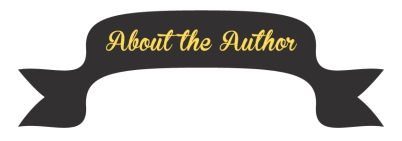
Title: Eliza and Her Monsters
Author: Francesca Zappia
Format: ARC, 389 pages
Publication: May 30th 2017 by Greenwillow Books
Source: Won from a giveaway contest (thank you Precious @ Fragments of Life!)
Genre: Fiction—Contemporary, Realistic
Other classifications: Depression and Mental Illness, Young Adult
Goodreads | Amazon | IndieBound | Fully Booked

In the real world, Eliza Mirk is shy, weird, and friendless. Online, Eliza is LadyConstellation, anonymous creator of the webcomic Monstrous Sea. With millions of followers and fans, Eliza’s persona is popular, and she can’t imagine enjoying the real world as much as she loves her digital community. Then a key member of the fandom, Wallace Warland, transfers to her school and Eliza begins to wonder if a life offline might be worthwhile. But when Eliza’s identity is accidentally revealed, everything she’s built—her story, her relationship with Wallace, and even her sanity—begins to fall apart.

Eliza and Her Monsters is at once a love letter to fandom and a touching portrayal of depression and anxiety.
The book is about the shy, awkward teenage Eliza Mirk who would rather spend her time in front of the computer screen or work on her art. She is the person behind LadyConstellation, anonymous creator of the widely popular webcomic Monstrous Sea, a secret only her immediate family and two online friends are privy to. If things go according to plan, she will finish both her comic and high school under the radar. But things rarely go according to plan. She befriends the new guy, Wallace Warland, who turns out to be not only a hardcore Monstrous Sea fan but also a fan fiction writer and Eliza begins to wonder if perhaps life outside her room and the digital community is not so bad. Then, by some earnest mistake, she is outed, painfully and publicly. What’s striking about Eliza and Her Monsters is not how it looks at mental health with unflinching resolve, although that comes really close. It is how Zappia writes with lightness and empathy without ever treating lightly her dark subject.
“There is a small monster in my brain that controls my doubt.
The doubt itself is a stupid thing, without sense or feeling, blind and straining at the end of a long chain. The monster, though, is smart. It’s always watching, and when I am completely sure of myself, it unchains the doubt and lets it run wild. Even when I know it’s coming, I can’t stop it.”
I want to commend the author for capturing the joys and complexities of family, all the while celebrating online friendships as well. Eliza’s family is incredibly well written. Peter and Anna Mirk are two very involved parents who care about their children but don’t always understand things. As a result, they are constantly on Eliza, nagging her to get her nose off her phone or otherwise hounding her to do outdoorsy stuff or hang out with “actual” people. They have zero grasp on the notion of internet-only friends and this is the ultimate source of antagonism between them and their daughter. I am a millennial okay, and there was a time in my college years when I would spend all my time in Tumblr, and I think Zappia gets that. Gets it a lot. Next are Sully and Church, Eliza’s younger siblings. They are equal parts annoying (for our MC at least) and endearing and I wish we got to spend more time with them, albeit I can see how that’s unnecessary. Then we have the online friends Max and Emmy. They only appear through group chats—and not too frequently either—but I kid you not, those are some of my favorite scenes. Because how many friends do I have, that I’ve met through the internet, that I talk to on a daily basis? The dynamics between the three just feels organic and the easy banters are exceedingly enjoyable. Even the friendships Eliza form with Wallace’s friends, founded on a shared love for Monstrous Sea, do not for once ring hollow. Now, have you met Wallace Warland? Because I swear you want to meet him. If my Goodreads updates are any indication, I was all heart-eyes emojis as soon as he steps into the campus.
“I do have friends. Maybe they live hundreds of miles away from me, and maybe I can only talk to them through a screen, but they’re still my friends.”
I absolutely adore the romance between Eliza and Wallace. Gosh, they were super awkward! #awkwardisforever Especially with Wallace not speaking out loud. So they converse with handwritten notes instead, and a I think that’s old-school romantic and b something I relate with. There were and are times when I would leave someone a note or text rather than talk to him in person. You know, how it sometimes seems like what you want to say doesn’t translate well to what you actually say. This isn’t the basis for Eliza and Wallace’s notes conversations of course, but I thought the author did a nuanced exploration of that nevertheless. The romance also isn’t some instalove business, which I appreciate. The two became friends then lovers. But more importantly, it didn’t free Eliza from her monsters. Romance isn’t the thing that saved her and tied everything neatly in a bow.
“I have to try. I have to try, because I’m doing it again—I’m shutting everything out because I’m frustrated and tired and because the real world is difficult and I’d rather live in one of my own making. But I can’t. I am here, and I have to try.”
One of the many themes of the novel is mental health. Eliza, aside from being introverted, is an intensely anxious person and she tends to fold into herself when situations get uncomfortable. Her favorite book series, Children of Hypnos, deals heavily on depression and her webcomic Monstrous Sea is a metaphor for it. Wallace is equally in need of help, if for different reasons. And there are thoughts and (arguably) one act of suicide. But Zappia handles the material with sensitivity, never romanticizing nor trivializing any of it, and the effect is often raw and moving. As intriguing as the panels and excerpts interspersed through out the story are, which make for an interesting format. As spot on as the depiction of craft and the creative life is. Really, the one problem I had with this book is a scene I don’t buy and which I will not spoil you with. It happens towards the latter part and, while it serves the plot, I believe it’s a little bit out of touch with the character.
“Broken people don’t hide from their monsters. Broken people let themselves be eaten.”
Eliza and Her Monsters is my first Francesca Zappia title but it will definitely not be the last. If you’ve enjoyed Fangirl by Rainbow Rowell or My Heart and Other Black Holes by Jasmine Warga, you might want to check this one out. Or vice versa.



Francesca Zappia lives in central Indiana and is the author of Made You Up.
Have you read this one yet? Have I convinced you to? What are some of your favorite books that feature a character(s) with mental health illness? What are you currently reading? Come now, sound off in the comments below!
You can also stalk follow me elsewhere! On Twitter, Instagram, Tumblr, Goodreads, and Bloglovin.






































